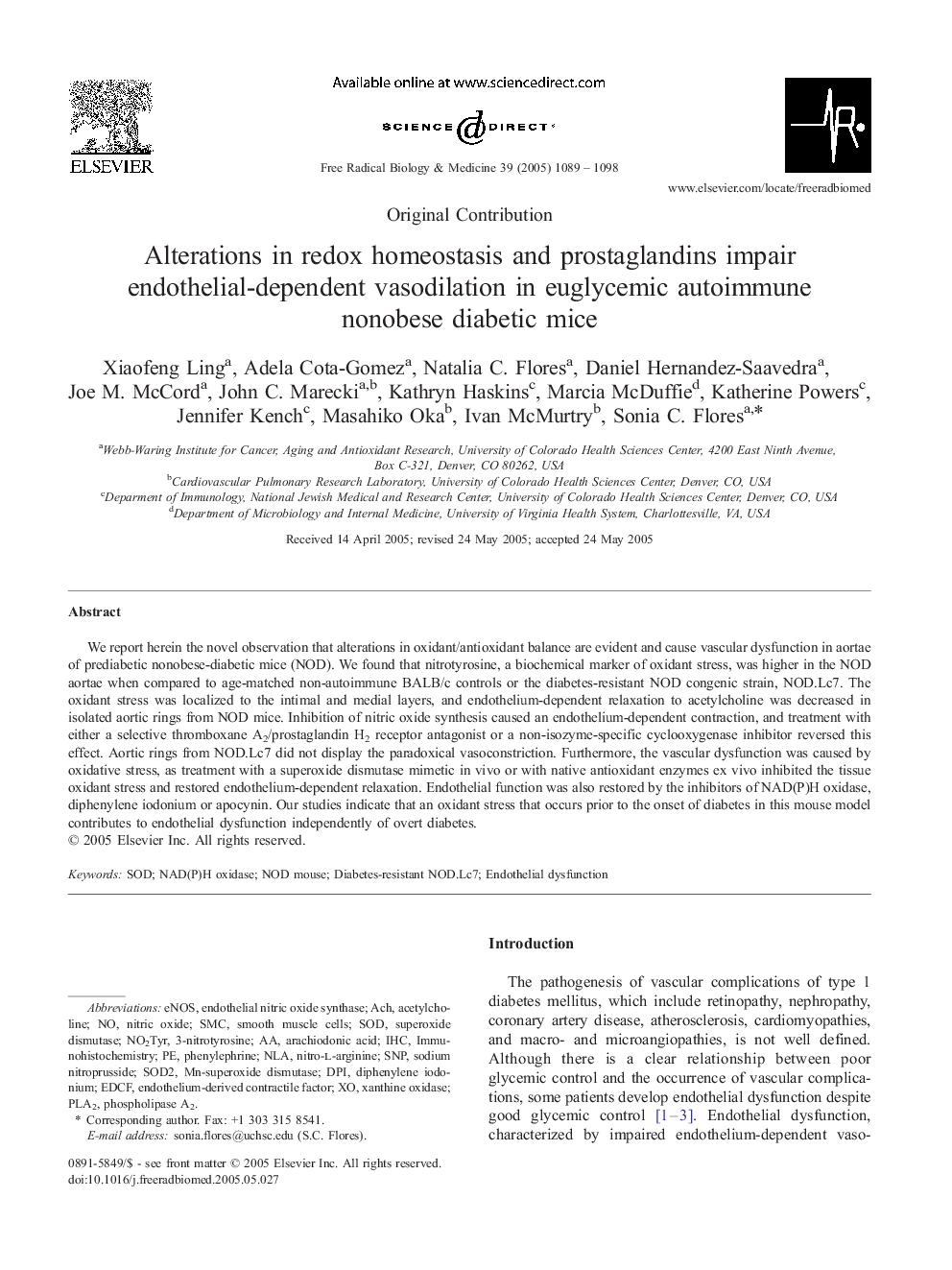| Article ID | Journal | Published Year | Pages | File Type |
|---|---|---|---|---|
| 10738963 | Free Radical Biology and Medicine | 2005 | 10 Pages |
Abstract
We report herein the novel observation that alterations in oxidant/antioxidant balance are evident and cause vascular dysfunction in aortae of prediabetic nonobese-diabetic mice (NOD). We found that nitrotyrosine, a biochemical marker of oxidant stress, was higher in the NOD aortae when compared to age-matched non-autoimmune BALB/c controls or the diabetes-resistant NOD congenic strain, NOD.Lc7. The oxidant stress was localized to the intimal and medial layers, and endothelium-dependent relaxation to acetylcholine was decreased in isolated aortic rings from NOD mice. Inhibition of nitric oxide synthesis caused an endothelium-dependent contraction, and treatment with either a selective thromboxane A2/prostaglandin H2 receptor antagonist or a non-isozyme-specific cyclooxygenase inhibitor reversed this effect. Aortic rings from NOD.Lc7 did not display the paradoxical vasoconstriction. Furthermore, the vascular dysfunction was caused by oxidative stress, as treatment with a superoxide dismutase mimetic in vivo or with native antioxidant enzymes ex vivo inhibited the tissue oxidant stress and restored endothelium-dependent relaxation. Endothelial function was also restored by the inhibitors of NAD(P)H oxidase, diphenylene iodonium or apocynin. Our studies indicate that an oxidant stress that occurs prior to the onset of diabetes in this mouse model contributes to endothelial dysfunction independently of overt diabetes.
Keywords
DPIEDCFSMCPLA2eNOSSOD2Xanthine oxidase3-nitrotyrosineNAD(P)H oxidasephospholipase A2AChEndothelial dysfunctionAcetylcholineImmunohistochemistryIHCdiphenylene iodoniumSODSmooth muscle cellsendothelial nitric oxide synthaseSuperoxide dismutasephenylephrineMn-Superoxide dismutaseNOD mouseNlanitro-l-argininesodium nitroprussideNitric oxideSNP
Related Topics
Life Sciences
Biochemistry, Genetics and Molecular Biology
Ageing
Authors
Xiaofeng Ling, Adela Cota-Gomez, Natalia C. Flores, Daniel Hernandez-Saavedra, Joe M. McCord, John C. Marecki, Kathryn Haskins, Marcia McDuffie, Katherine Powers, Jennifer Kench, Masahiko Oka, Ivan McMurtry, Sonia C. Flores,
